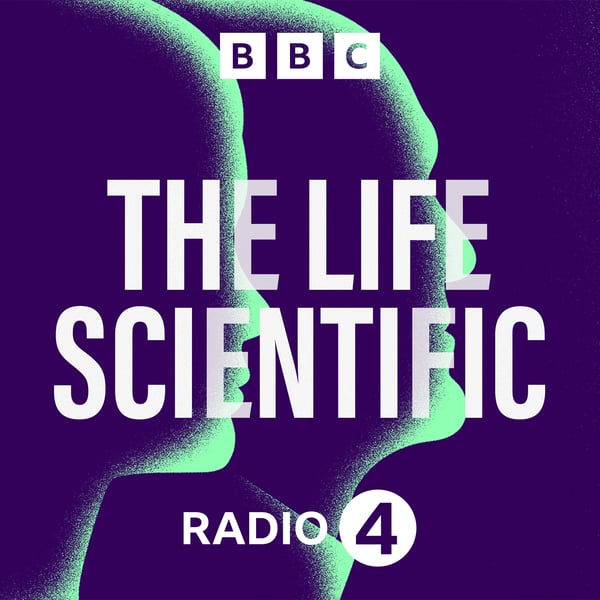Elspeth Garman on crystallography
The Life Scientific
BBC
4.6 • 1.4K Ratings
🗓️ 7 October 2014
⏱️ 28 minutes
🧾️ Download transcript
Summary
Transcript
Click on a timestamp to play from that location
| 0:00.0 | You're about to listen to a BBC podcast and I'd like to tell you a bit about the |
| 0:03.8 | podcast I work on. I'm Dan Clark and I commissioned factual podcasts at the BBC. |
| 0:08.6 | It's a massive area but I'd sum it up as stories to help us make sense of the forces shaping the world. |
| 0:15.0 | What podcasting does is give us the space and the time to take brilliant BBC journalism |
| 0:20.0 | and tell amazing compelling stories that really get behind the headlines. |
| 0:23.7 | And what I get really excited about is when we find a way of drawing you into a subject |
| 0:28.3 | you might not even have thought you were interested in. |
| 0:30.2 | Whether it's investigations, science, tech, politics, culture, true crime, the environment, |
| 0:36.1 | you can always discover more with a podcast on BBC Sounds. |
| 0:39.8 | Thank you for downloading the Life Scientific from BBC Radio 4. |
| 0:44.0 | In case you missed it, this year is International Year of Crystallography. |
| 0:49.0 | We're celebrating a hundred years of X-ray Crystallography, a scientific technique that's used to study the |
| 0:54.4 | internal structure of matter. It may sound rather arcane, but in the last century |
| 0:59.6 | it's led to 28 Nobel Prizes. That's almost won every three years. X-rays are of course used to |
| 1:06.5 | provide useful images of our bones, but even more clever is the technique of X-ray diffraction, which allows us to penetrate matter and reveal |
| 1:15.0 | the internal shape and structure of all sorts of different molecules. |
| 1:19.3 | From salt at the turn of the last century to insulin and penicillin. |
| 1:23.2 | It is an incredibly powerful tool and it's important because by understanding the precise |
| 1:28.2 | shape and structure of molecules we can understand how they work. We can now make synthetic insulin, for example, or develop drugs that block the action of harmful molecules. |
| 1:39.0 | Oxford Universities, Professor El Smith-Garmon, is one of the world's leading authorities in the field. |
| 1:44.8 | While others have scooped up prizes for cracking structures of medically important molecules, |
| 1:50.0 | Elspeth has dedicated most of her working life to improving the methods and techniques used by everybody working in the field, |
... |
Please login to see the full transcript.
Disclaimer: The podcast and artwork embedded on this page are from BBC, and are the property of its owner and not affiliated with or endorsed by Tapesearch.
Generated transcripts are the property of BBC and are distributed freely under the Fair Use doctrine. Transcripts generated by Tapesearch are not guaranteed to be accurate.
Copyright © Tapesearch 2025.

